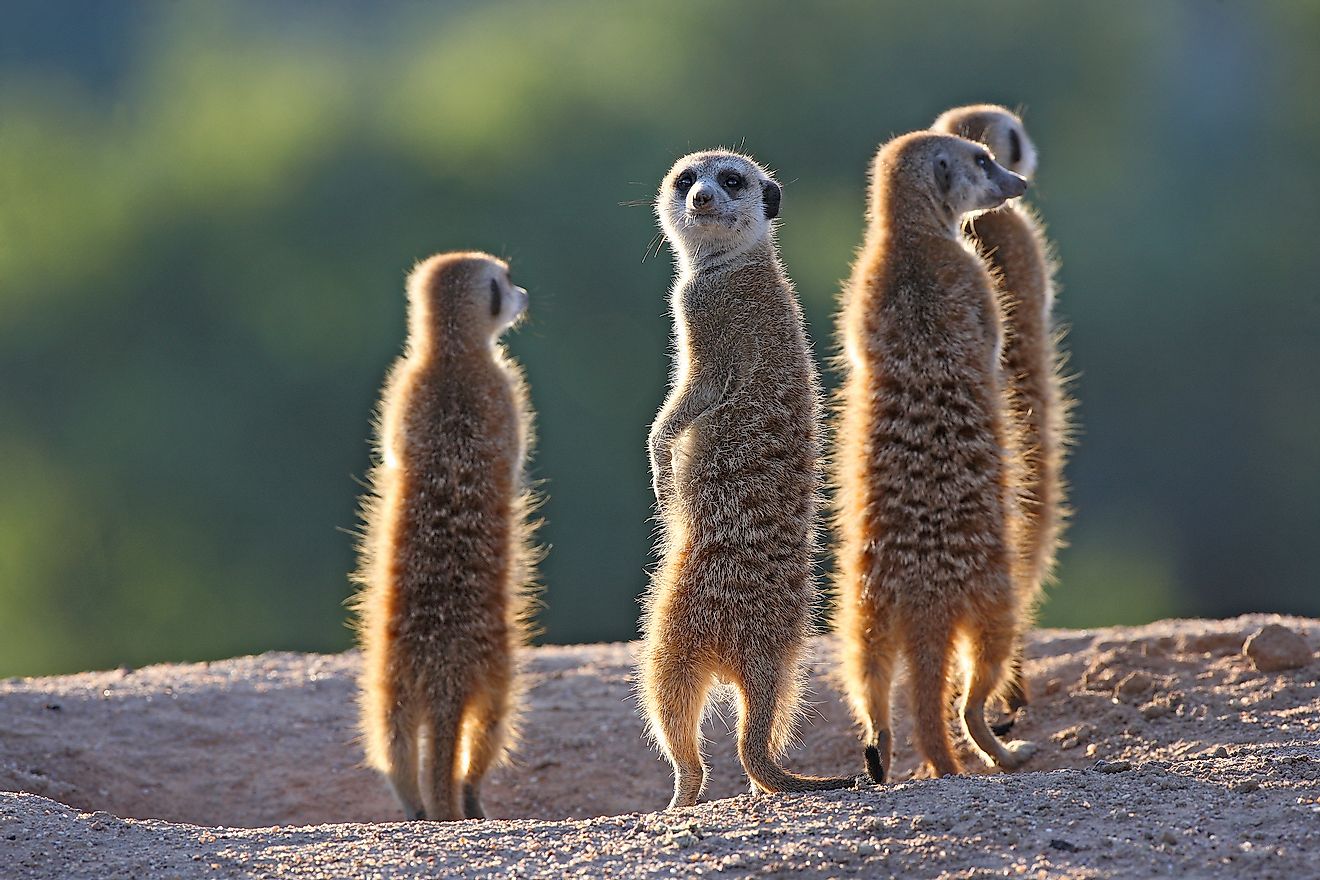
- A meerkat is a small foraging mammal that is a member of the mongoose family Herpestidae.
- They live in large groups of up to 40 members called a gang or a mob.
- They live in intricate underground tunnel systems called burrows.
- Meerkats have scent pouches under their tails that they rub against rocks and plants to mark their territory.
In case you’re wondering, no, meerkats don’t really travel around with a warthog. Instead, in real-life they prefer to stay among the company of their own—keeping a tight-knit group with members that perform specific tasks.
Here are a few more facts about these interesting creatures.
What Is A Meerkat?
Origin Of Their Name: The name meerkat is believed to have been derived from the Sanskrit word Merkata which means “ape” or “monkey.” European explorers and traders eventually changed it to meerkat from the words meer (lake) and kat (cat).
Taxonomic Position
- Phylum: Chordata
- Class: Mammalia
- Order: Carnivora
- Family: Herpestidae
- Genus: Suricata
- Species: suricatta
- Binomial Name: Suricata suricatta (Schreber, 1776)
A common question is “Are Meerkats Rodents?” No, a meerkat (Suricata suricatta) is not a rodent. It’s a small foraging mammal that’s a member of the mongoose family Herpestidae. They belong to the order Carnivora along with other animals that have prominent canine teeth like dogs and wolves.
They have bushy brown and gray fur with big eyes surrounded by dark patches. These patches act like sunglasses that protect their eyes from the sun. They have long, sharp claws they use for digging burrows and a pointed snout that helps them reach prey through small gaps in the ground.
Where Do Meerkats Live?
Meerkats live in the deserts and grasslands across Africa. Many of them can be found in western and southern Namibia, southwestern Botswana, north and west South Africa as well as the extreme southwestern parts of Angola and Lesotho.
Meerkats inhabit open and arid lands including open plains and savannah. They prefer areas with firm to hard soils. They dig out intricate underground tunnel systems called burrows. These burrows can be 16 feet long and up to 1.5 meters deep with multiple entry points, tunnels, and rooms. It helps protect the mob from predators and the harsh heat of the desert sun.
Some Quick Facts About Meerkats
What is a Group of Meerkats Called?
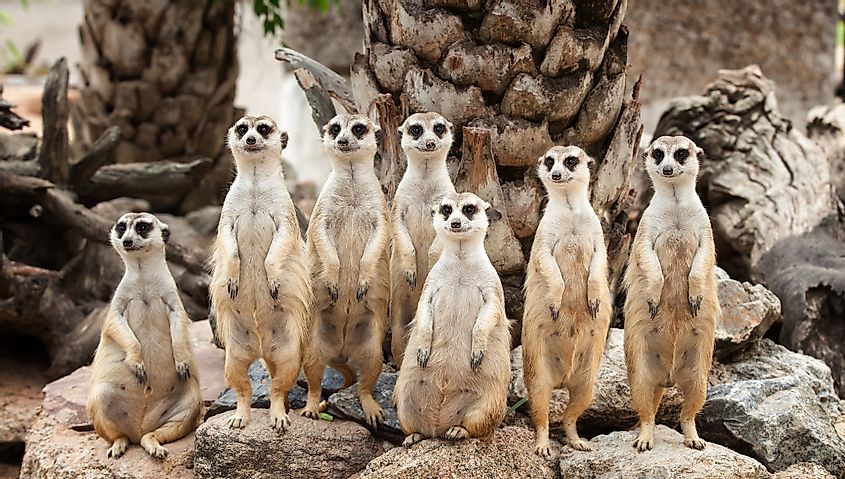
While others forage for food there will be a lookout called a sentry that will guard against predators. The sentry will find the highest point that could afford a view of the desert and the sky. The guard may also stand on his hind legs to get a better view.
It will scan the area and watch out for threats so the rest can focus on finding food. If the sentry spots a predator it will let out a loud squeal or call to warn the others. The latter will then hide inside their safe-spots called bolt-holes.
How Big And Tall Is A Meerkat?
Meerkats have rounded forehead and a tapered faces that come to a point at the nose. Dark patches around their eyes is a distinguishing factor of the species. Their fur color varies geographically ranging from brown to peppered gray with lighter colors in more arid environments. Tails have a black tip. The dorsal parts of the body have less fur than the ventral parts. The foreclaws are adapted to digging burrows in the ground.
What Sound Does A Meerkat Make?
Meerkats make at least 20 sounds and vocalizations. These sounds which include murmurs, loud twitters, gentle purs, or threatening growls deliver different messages. For example, a sentry or guard will let out a high-pitched squeal or bark to warn others of danger.
What Do Meerkats Eat?
Predators of Meerkats
Among the many predators that see meerkats as a meal are birds of prey like eagles and hawks. On the ground, they are hunted by jackals and other snakes. Although many fight back predators like snakes through a method called mobbing. They would form a circle around the predator and hiss together to try to scare away the predator.
They use alarm calling, running for cover, mobbing the predator, maintaining an upright alert stance as some of their anti-predator behavior. When threatened by aerial predators, meerkats usually seek refuge in their burrows. Adults are known to protect the young by covering them up with their own bodies. When defending themselves from terrestrial predators, they try to project themselves as tall as possible and growl, hiss, and spit to discourage the enemy from attacking.
How Long Do Meerkats Live?
Meerkats can live up to 8 years in the wild and 10 to 13 years in zoos.
Meerkat Behavior
They are fiercely territorial and will fight predators and other meerkats to protect their territory. When threatened they would stand together, arch their backs, raise their hairs, and hiss, which could fool an attacker into thinking that they are one large vicious animal.
Meerkats and Other Animals
Sometimes animals like prairie dogs and mongoose are wrongly identified as meerkats. Here are the differences between them:
Meerkat Vs Prairie Dog
While prairie dogs like meerkats live in a complex network of tunnels and live in large groups too there are many key differences between these two animals. Meerkats are endemic to Africa while prairie dogs are found mostly in North America. They are also rodents that feed mainly on plants like herbs, shrubs, leaves, roots, and seeds.
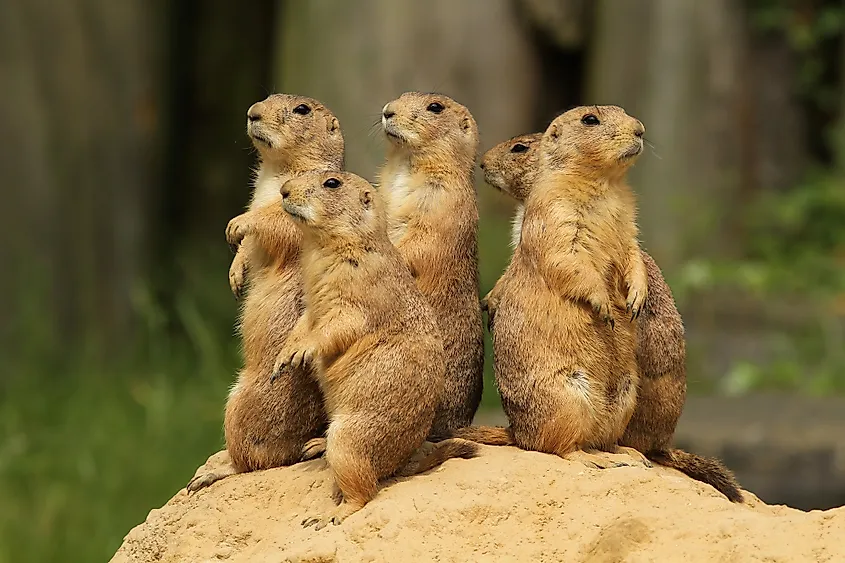
Prairie dogs also do not have a meerkat’s signature dark circles around the eyes and they have thicker bodies that protect them from the cold.
Meerkat Vs Mongoose
Here, it must be made clear that a meerkat is also a type of mongoose belonging to the same family (Herpestidae) as animals that are named mongoose. Hence, meerkats and mongooses have many similarities since they belong to the same family of animals. They both are highly sociable animals that live in large groups and they both live in burrows. Although, when observed side by side, you’ll see many differences in their appearance.
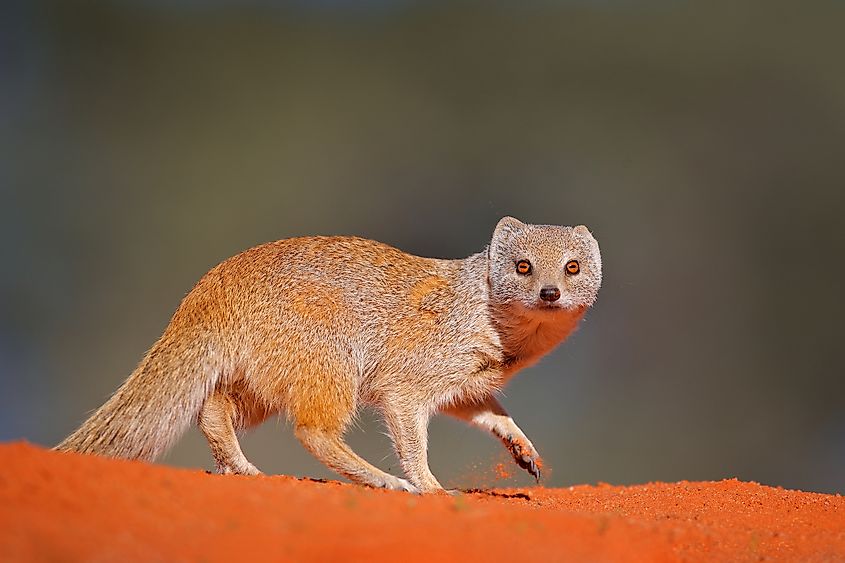
The tail of a mongoose is a lot bushier compared to that of a meerkat, and they also have a broader face. Aside from that, the mongoose is not just found in Africa but also in some parts of Asia and Europe.
Role In The Ecosystem
Meerkats are an integral part of the food web in the ecosystem occupied by them. They keep the invertebrate population in check and, in turn, serve as food for many predator species like birds of prey and terrestrial carnivores. They are often useful to humans as well by keeping agricultural pest population under control, especially Lepidopterans. However, meerkats are also the source of the rabies disease and attacks of rabies-infected meerkats on people and domestic animals have been documented in the past.
Threats and Conservation of Meerkats
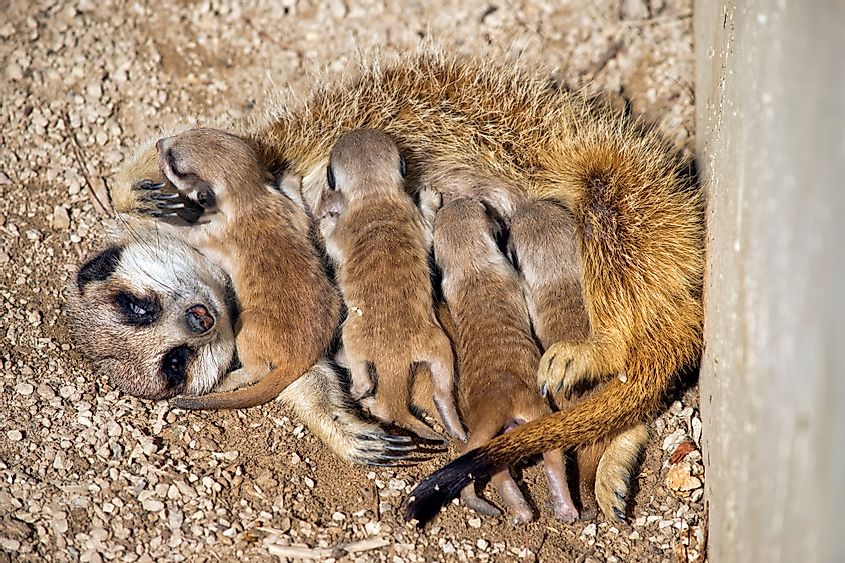
Meerkats are not currently endangered. They are considered of least concern in the IUCN (International Union for Conservation of Nature) Red List of Threatened Species. They are widely distributed across Africa with populations thriving in the wild.
At present, there are no significant threats to meerkats that could dramatically reduce their population enough to endanger their species. But they do have many predators and enemies in the wild including birds of prey, snakes, other desert carnivores as well as meerkats from other gangs. Studies are being conducted to assess the possible effects of climate change on meerkat populations in the future.
Meerkat Facts
| Animal Facts | Info |
|---|---|
| Scientific Name | Suricata suricatta |
| Classification | Mammal |
| Weight | <1kg |
| Body length | around 25 cm to 35 cm (plus a 17.5 cm to 25 cm long tail) |
| Highest speed | 32 km/h |
| Diet | Omnivore:Insects, rodents, reptiles, etc., and plant matter |
| Lifespan | About 8 yrs |
| Breeding Time | Throughout the year with seasonal peaks |
| Gestation | 60 to 70 days |
| Number of young | 3 to 7 pups |
| Conservation Status | Least Concern |


 Users Today : 97
Users Today : 97 Total views : 469159
Total views : 469159